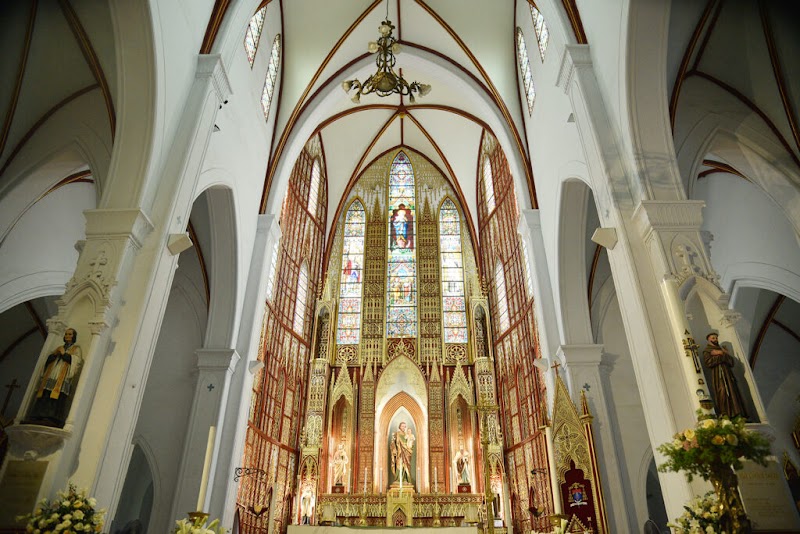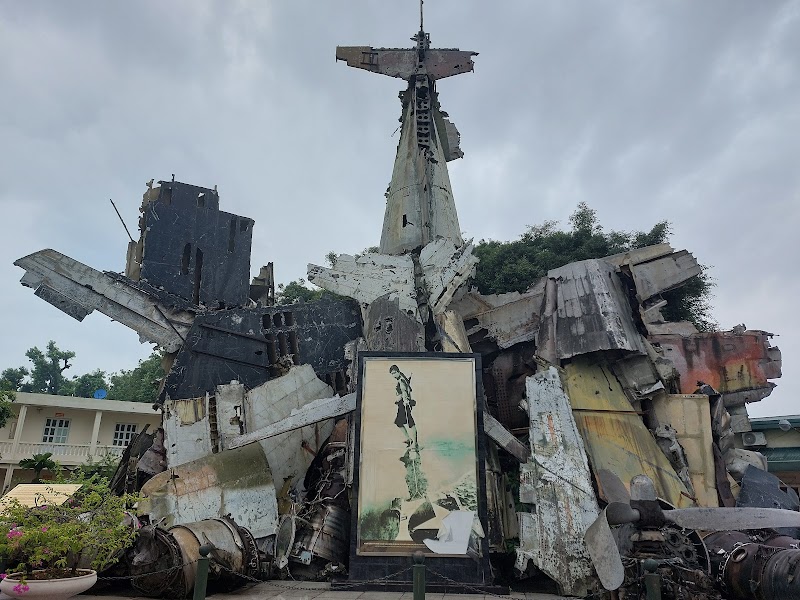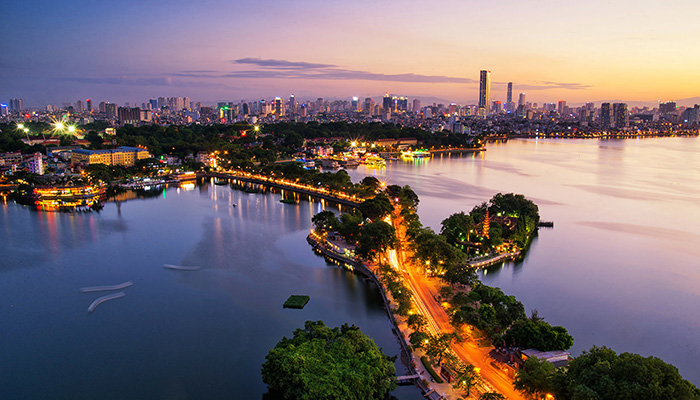Welcome to Vietnam
Did you know that this Asian gem, Vietnam, is home to over 3,000 kilometers of spectacular coastline, stretching from the Gulf of Tonkin in the north to the Gulf of Thailand in the south? This incredible country is a treasure trove of unique experiences, from the limestone islands of Ha Long Bay, the ancient town of Hoi An, to the pulsating streets of Hanoi. Immerse yourself in a world of rich history, vibrant culture, and stunning natural beauty that will leave you in awe.
Planning your adventure in this mesmerizing country is an exhilarating task, and to guide you, we present our comprehensive Tourist Map of Vietnam. This map isn't just a tool, it's your personal guide, designed to inspire, to help you uncover hidden gems, and tailor your journey to your interests. With this map, the wonders of Vietnam are within reach, awaiting your discovery.
What to see and do in Vietnam
From its cloud-kissed mountains in the North, vibrant cities bursting with life, to serene beaches in the South, Vietnam is a mosaic of experiences, colors, and emotions that will stir your spirit and fire up your imagination. Now, let's journey into the heart of Vietnam and discover what makes this country truly remarkable and captivating.
The Majestic Mountains of Northern Vietnam
The northern region of Vietnam is a magical realm of towering mountains, emerald terraced rice fields, and vivid hill tribes. Here, landscapes spring forth from the earth like a mythical dragon, a testament to the unyielding spirit of this land. A place of awe-inspiring beauty is Sapa, a highland town renowned for its magnificent views of the Hoang Lien Son Mountains.
Experience Sapa's Vibrant Hill Tribes
The most enriching experience in Sapa is undoubtedly interacting with the hill tribes, whose vibrant traditional costumes and time-honored customs bring a rich cultural layer to the stunning landscapes. A visit to a local market or a trek to a remote village will offer you a peek into their distinctive way of life, a vibrant contrast to the urban pulse of Vietnam's cities.
Dynamic Urban Life in Ho Chi Minh City
Ho Chi Minh City, once known as Saigon, is a dynamic metropolis that showcases a captivating fusion of the old and the new. Soaring skyscrapers stand alongside colonial-era buildings, and modern shopping malls juxtaposed with traditional markets. The city buzzes with energy and vitality, a testament to Vietnam's rapid development.
Discover the Secrets of the Cu Chi Tunnels
Just outside Ho Chi Minh City lies a remarkable testament to Vietnamese resilience and ingenuity: the Cu Chi Tunnels, an extensive underground network used by Viet Cong soldiers during the Vietnam War. Exploring these tunnels offers a sobering insight into the harsh realities of war and the indomitable spirit of the Vietnamese people.
The Serene Beauty of Southern Vietnam
Heading south, you'll find a different rhythm of life in the Mekong Delta, where life revolves around the water. This is a land of floating markets, stilt houses, and lush rice paddies, where the pace of life is slower and more in harmony with nature.
Experiencing Life on the Mekong Delta
One unique experience you shouldn't miss is joining a boat tour to the floating markets of Cai Rang or Phong Dien, where locals trade goods directly from their boats in a lively aquatic bazaar. It's an unforgettable sight that encapsulates the enduring charm and vitality of life on the Mekong Delta.
Whether you're seeking adventure in the mountains, cultural immersion in its cities, or tranquility in its southern waters, Vietnam is a country that caters to every traveler's desire, promising unforgettable experiences and cherished memories. And if you're interested in the scenic beauty of Ninh Binh, do check out the Ninh Binh tourist map for a comprehensive guide.

Booking.com
Practical Information for Your Trip to Vietnam
Transportation and Mobility
Getting around in Vietnam is a distinctive experience. Motorbikes are the most popular form of transportation, with millions zipping through the city streets every day. For a more comfortable ride, taxis are widely available and relatively affordable. To ensure a fair price, always choose metered taxis or use ride-hailing apps like Grab.
For long-distance travel, trains offer a picturesque journey across the country, from the bustling cities to the serene countryside. For maximum comfort, opt for soft sleeper class tickets. Alternatively, domestic flights are a quick and efficient way to cover large distances. Major airlines include Vietnam Airlines, VietJet Air, and Bamboo Airways.
Schedules and Prices
Most attractions in Vietnam open early and close by late afternoon. Typically, museums and historical sites are open from 7:30 AM to 5:00 PM. Street food stalls usually start serving from early morning and continue late into the night.
Cost of living in Vietnam is relatively low compared to Western standards. Expect to spend around 200,000 - 300,000 VND ($8 - $13) per day on food and drinks. Admission to most attractions typically ranges from 30,000 VND ($1.30) to 150,000 VND ($6.50).
Safety Tips
While Vietnam is generally safe for travelers, it's important to remain vigilant. Be mindful of your belongings in crowded areas, as pickpocketing can occur. When riding motorbikes or bicycles, helmets are compulsory. Avoid late-night walks in less crowded areas, especially if you are traveling alone.
Practical Recommendations
When it comes to packing, light and breathable clothes are ideal year-round, but don't forget to pack a jacket if you plan to visit the northern highlands, where temperatures can drop significantly. It's also wise to carry insect repellent, especially if you're heading to rural areas.
As for the best times to visit, October to April is the dry season and generally the best time to explore the central and southern parts of Vietnam. For the northern regions, May to October is ideal, as it’s usually warm and humid with heavy showers that bring lush green landscapes.
Remember, it's always important to respect local customs and traditions. When visiting religious sites, dress modestly and adhere to any guidelines provided.

Frequently Asked Questions about Vietnam
1. What are some unique Vietnamese experiences that I shouldn't miss?
Experiencing Vietnam's rich culinary scene is an adventure in itself. Delight in a street food tour in Hanoi or Ho Chi Minh City, where you can try local delicacies like 'Pho', 'Banh Mi', and 'Bun Cha'. For the adventurous, motorbiking through the Hai Van Pass offers breathtaking coastal views. Culture enthusiasts should not miss a traditional water puppet show, a unique art form native to northern Vietnam.
2. Are there any specific rules or local customs I should be aware of in Vietnam?
Honor and respect for family and ancestors are deeply rooted in Vietnamese culture. When visiting religious sites or local homes, dress modestly and avoid showing too much skin. It's also common to remove your shoes before entering a home or temple. Remember to negotiate prices in markets, as haggling is a common practice.
3. Can I volunteer or work while I'm traveling in Vietnam?
Yes, volunteering opportunities are plentiful in Vietnam, particularly in areas like teaching English, conservation work, and community development. To legally work in Vietnam, you'll need a work permit and a business visa. Do thorough research to ensure that any volunteering or work is ethical and beneficial to the local community.
4. How can I respect and contribute to local communities during my trip?
Supporting local businesses is a fantastic way to contribute to communities in Vietnam. Consider buying souvenirs from local artisans, eating at family-owned restaurants, or booking tours with local guides. Always be respectful of the local culture and environment, and ensure your actions contribute positively to the sustainability of these communities.
5. What is the healthcare situation like in Vietnam? Should I get any specific vaccines before traveling?
While Vietnam has adequate healthcare facilities, especially in larger cities like Hanoi and Ho Chi Minh City, rural areas may lack sophisticated medical resources. It's recommended to have travel insurance that covers medical evacuation. As for vaccines, ensure you're up-to-date on routine vaccines, and consider shots for Hepatitis A and Typhoid, which can be contracted through contaminated food or water in Vietnam.
6. Can I use my credit card in Vietnam or should I carry cash?
Major credit cards are widely accepted in large cities and tourist spots in Vietnam. However, smaller establishments, local markets, and rural areas generally prefer cash. ATMs are readily available throughout the country, so it's easy to withdraw Vietnamese Dong as needed. Always keep some cash on hand for small purchases and emergencies.

